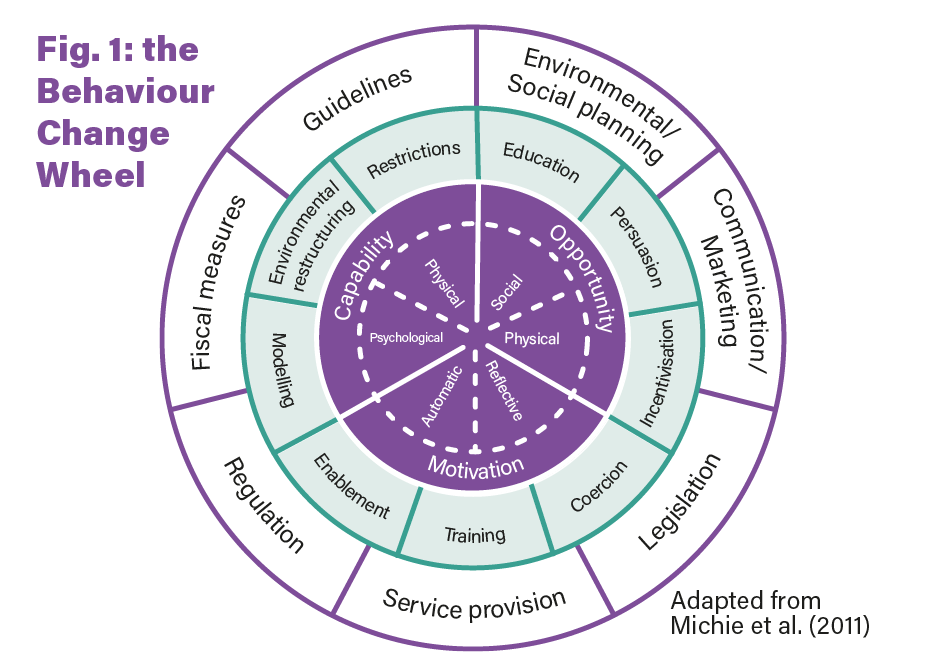
Perhaps one of the first few stops on anyone’s journey into learning about applied behavioural science is the Behaviour Change Wheel.
For those still unfamiliar with the Behaviour Change Wheel, you can consider it the sweetheart framework of the behavioural science sphere. This is because it is widely relevant to transforming behavioural research and findings into practical interventions and behaviour change strategies across a range of sectors and applications, including policy, health, environmentalism, and education, as well as many others.

This is no wonder, considering that the Behaviour Change Wheel itself was developed by compiling the knowledge of 19 established frameworks within behaviour change through a systematic literature review by leading behavioural scientists and researchers Susan Michie, Maartje van Stralen, and Robert West.
The Behaviour Change Wheel consists of three layers that guide researchers, designers, and policy makers towards a practical and effective way of delivering real social change, starting from behavioural insights all the way through to the development and delivery of effective interventions. As you can see on the diagram of the Wheel in Figure 1, it does this by laying out the main components of the COM-B model at its centre, which connect to nine different intervention functions in the second layer. These consequently inform the third and final layer of the wheel that looks at how these intervention functions can be practically delivered.
By systematically following the three levels of the Behaviour Change Wheel in order, you can ensure that each step of your intervention is building on a solid foundation, with each layer reinforcing the previous. As a result, this minimises the risk of contradictions or inconsistencies between the components of your interventions, allowing for a cohesive progression which can achieve higher resonance with the target audience to realise the change you are looking for.
The Behaviour Change Wheel is particularly adept at helping you identify the most effective path forward as it offers a selection of policy categories that traverse the ‘Stealth to Force’ continuum (Evans, 2020), enabling designers towards identifying strategies that can actually achieve long-term target behaviour maintenance, target audience buy-in and engagement, without overstepping boundaries.
If you’re curious about learning more about the Behaviour Change Wheel and its layers, as well as the ‘Stealth to Force’ scale and other frameworks that can help you at various stages of intervention development, then you’re probably going to love our guide. You can check it out on our Changemaker Academy here.
References:
Authors: Susan Michie, Maartje M van Stralen, Robert West
Author: Kelly Evans (2020)
Copyright: Social Change UK

